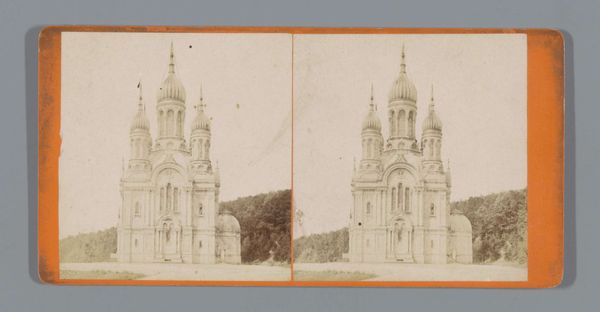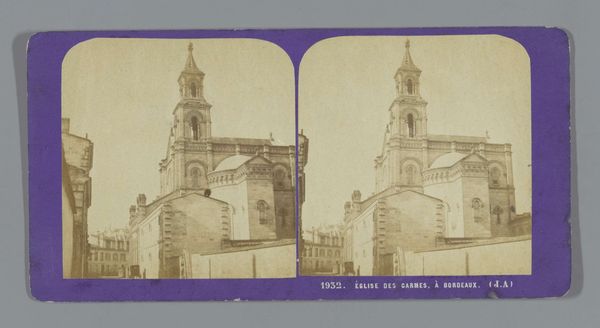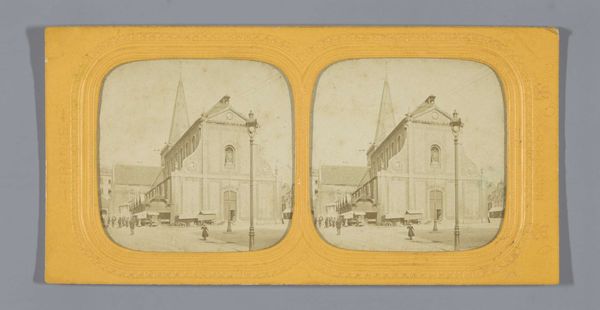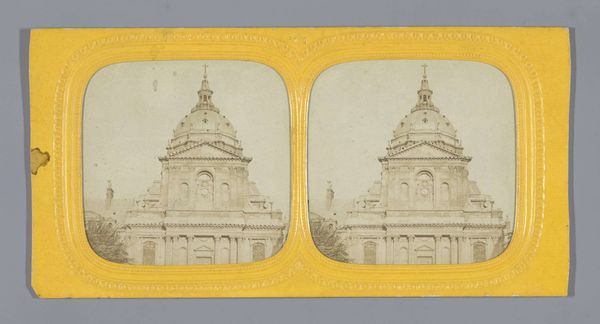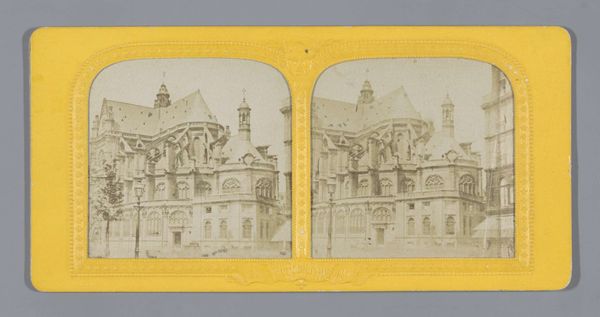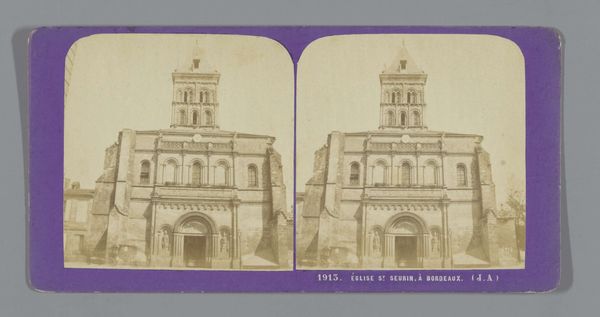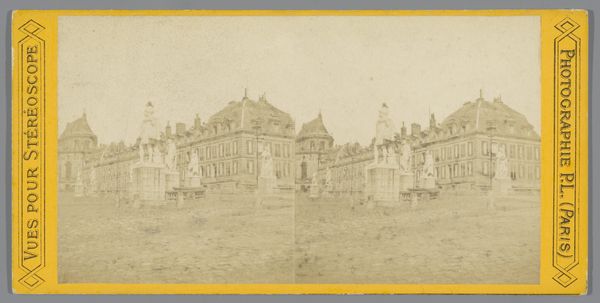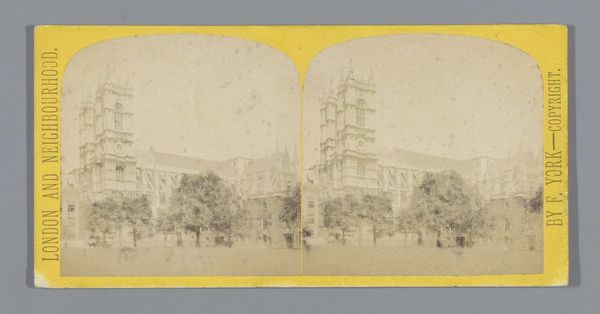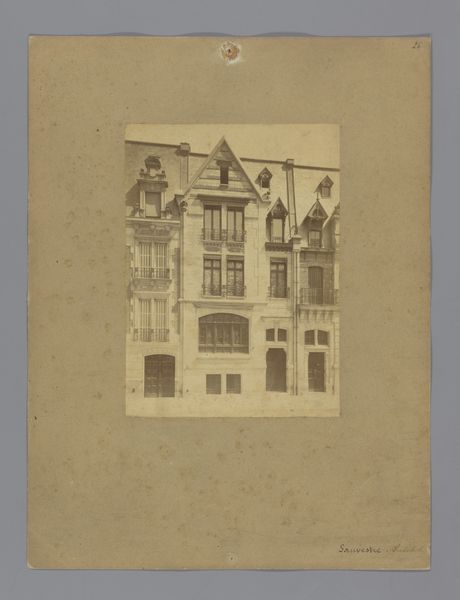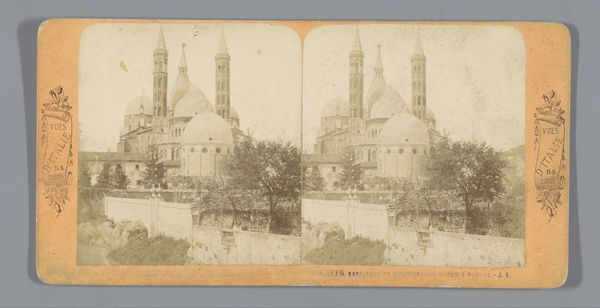
print, photography, architecture
#
16_19th-century
# print
#
photography
#
cityscape
#
architecture
Dimensions: height 84 mm, width 174 mm
Copyright: Rijks Museum: Open Domain
Editor: Here we have a stereoscopic print from 1868, "Parochiekerk in Boedapest," by Charles Gaudin, showcasing architecture through photography. It has an ethereal, almost dreamlike quality, probably owing to the age and printing process. How do you interpret this work? Curator: For me, this image exists as a complex historical artifact. While on the surface, it seems to be a straightforward depiction of architecture, we need to remember this was created in a period of rapid change. How do you think photography was perceived at this moment in relationship to art, particularly painting and its established dominance? Editor: I imagine photography, even then, raised questions about what it meant to record reality. Did it democratize art or diminish artistic skill? Curator: Exactly. Photography allowed for wider dissemination of images of places and people, reshaping how society perceived itself. Churches, in particular, carried considerable social and political weight. Gaudin’s image captures not just the church's physical presence, but its role as a symbol of power, faith, and community identity. How do you see the relationship between the objective gaze of the camera and these layers of meaning? Editor: I guess the very act of selecting this subject, this angle, transforms what seems like objective documentation into a deliberate statement. Even the fact that it's a stereoscopic image, meant to create a three-dimensional illusion, makes it less about pure representation. Curator: Precisely! The stereoscopic effect adds another layer, inviting the viewer to imaginatively step into this space and engage with these layered narratives of faith and progress, identity, and the rapidly changing world. This print speaks volumes about how photography can be so much more than meets the eye, and how it actively contributes to social construction. Editor: I hadn’t considered the stereoscopic aspect in such a contextual light before. It definitely encourages deeper thinking about the image’s intent and impact! Curator: Yes, and understanding that relationship between what is included in the frame and what isn't helps to develop our critical viewing skills.
Comments
No comments
Be the first to comment and join the conversation on the ultimate creative platform.
